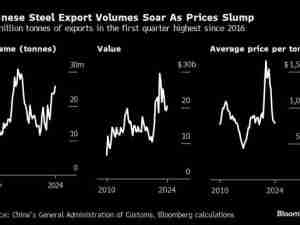The Commerce Department will release its December report on the international trade balance on Feb. 10 which is expected to show a deficit of $65.0 billion, compared with November's gap of $64.21 billion.
This is still expected to be the third-highest reading since the $68.13 billion record set in October.
Recent data for US manufactured goods showed demand for civilian aircraft and parts fell sharply in December, but total shipments remained robust, which boded well for US exports.
Exports are expected to have improved thanks in part to continued strong demand for aircraft
Boeing Co , the largest US aerospace company, said in January that commercial orders more than tripled to hit a record in 2005 because of strong demand from Asia and the Middle East.
However, the stronger dollar could have inflated imports, along with a still-high petroleum bill as oil prices remained above the $60 a barrel mark for much of December, analysts said.
If the trade deficit does indeed widen again, this may put pressure on the dollar, especially now that the Federal Reserve has suggested that it may not have much more need to keep raising interest rates.
Following are selected comments from Wall Street analysts.
Chris Low, Chief Economist, FTN Financial, New York:
Forecast: -$65.5 billion
'Fourth-quarter GDP revealed a significant rise in imports, up 9.1% in Q4 from a 3Q growth rate of 2.4%. On the other side of the ledger, exports have grown at a relatively slow pace for the last two quarters of 2005, about 2.4%, compared with nine percent in the first half. The strength of the dollar, particularly in November and December last year, exacerbated the influx of imports and by extension the trade deficit.'
Joseph Lavorgna, Chief Fixed Income Economist, Deutsche Bank Securities, New York
Forecast: -$64.0 billion
'Our guess is that with some production coming back on line you probably will get some increase in imports in December. It probably won't be where it was in October. At the same time, when you look at the durable goods report, shipments there are very strong, which suggests export trends are still in place, whoever you don't get much improvement in trade numbers because imports are so much larger than exports. If you get a healthy increase in exports and a flat to small reading in imports you don't get much improvement (in the trade balance).'
Citigroup Economics Team, New York:
Forecast: -$68.5 billion
'An import-led widening of the merchandise trade gap probably left the combined shortfall on international trade in goods and services at a record high in December. Merchandise imports likely rebounded sharply during the final month of 2005 to an all-time high of $150.5 billion.'
'Reflecting increased volumes, the US foreign oil bill probably rose by 1.8% to $25.0 billion, erasing a little over half of the reported November decline. On the other side of the ledger, a tug of war between reduced commercial jetliner deliveries to foreign carriers and projected increases in other goods shipments likely left merchandise exports marginally lower at $77.3 billion. The US surplus on trade in services probably was unchanged at $4.7 billion.' (Market News)






